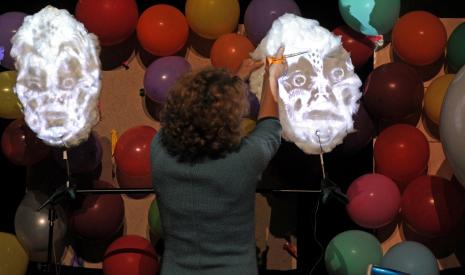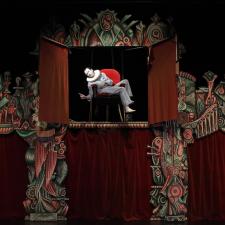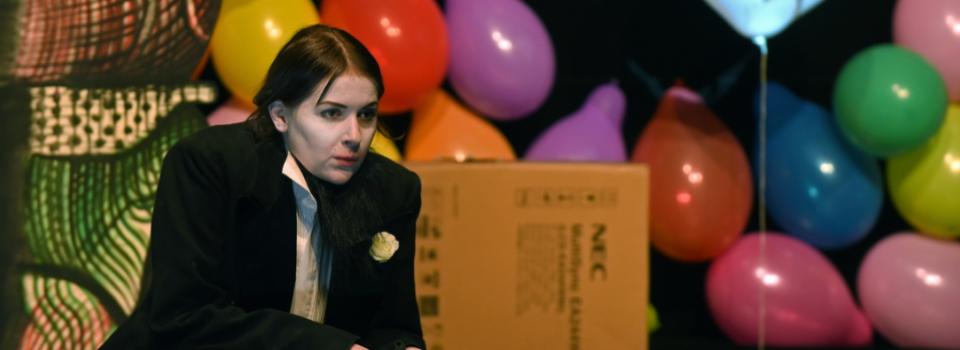
Richard III – Loyaulté me lie # 17
Ghosts and spectres (2/3)
The discovery of witchcraft and the first demonology studies profoundly marked the golden age of Elizabethan theatre. At the time, putting ghosts on stage was a serious business that conveyed a collective fascination and provided an outlet for the English people’s deepest fears.
Ghosts play a key role in Richard III. They tip over the intrigue, they are the sly and invisible keystone that elevates the tragedy and gives it its poetic force and melancholy tones. The famous scene of the ghosts is the play’s acme. Taking turns, they come to Richard’s bedside to reprimand and curse him and doing so, they allow the characters who have disappeared to speak again, giving them compensation in an expiatory ritual of justice. Shakespeare draws a path for this fable, from the spoken curses to their realisation, and doing so he turns the shadows that lurk around Richard into a ghost crueller than Richard himself.
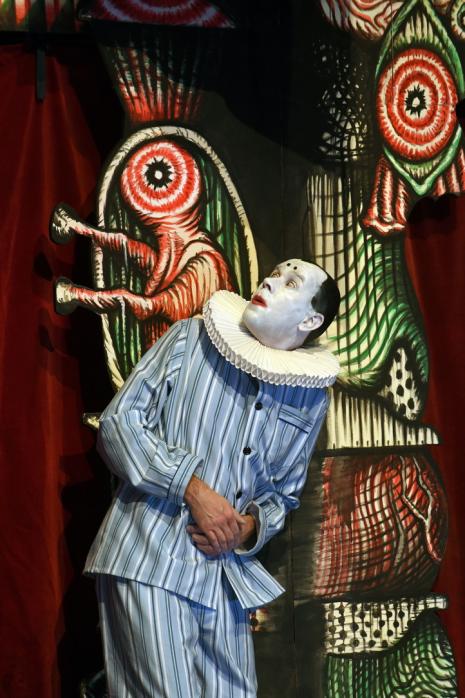
"I shall despair. There is no creature loves me;
And if I die, no soul shall pity me :
Nay, wherefore should they, since that I myself
Find in myself no pity to myself ?
tMethought he souls of all that I had murder'd
Came to my tent; and every one did threat
To-morrow's vengeance on the head of Richard. "
In French classical theatre, ghosts and revenants are quite rare. This is probably due to excessive Cartesianism or maybe the transmutation of ghosts into the magic of words. This French particularity is not without consequences since everywhere else in the world, demons, spirits, shadows, yokai, monsters, witches, invisibles, lemures and other malevolent spirits haunt theatre and make it. Nothing extraordinary here: theatre is the place where the dead converse with the living. Theatre is a time when, thanks to the magical connections that the actors open with their words, the dead can invite themselves at the table and call to arms the world that exists beyond the frontiers of our little reality. This is one of the main functions of revenants in theatre: to wake the living to an augmented consciousness of the world, to the nature of time, and to who they are.
A question remains: how can we show these spectres, what tools do we have to a create stage illusion of their otherworldly presence? It is always difficult to put this on a stage. How can we show what cannot be touched? Embody the impossible? How can we hear the abyss of silent lamentations? Devise a dramaturgy of what is invisible yet echoes the visible world? How to make humanity’s deepest beliefs and fears ring out? Many stage artifices were born from these questions. Elizabethan theatre found it difficult to build complex sets, with sophisticated stages. On the other hand, costumes, props and ingenious stagehands gave life to these ghosts. By speaking from the wings for example, or distorting voices with sheets of metal to give the impression that voices were coming from beyond the grave. Through the body too, and with make-up, demon masks or burnt and torn costumes. Putting on stage an invisible creature who speaks and acts has always been a challenge. Solutions evolved through history: Robertson’s phantasmagorias, Henry Dirk’s catoptric systems, Colonel Stodare’s talking decapitated head are famous examples, as are ‘spirit’ photographs that, using double exposure, showed ghosts in pictures. Similarly, we now use digital systems, 3D video and holograms as a continuation of this perpetual quest: to give for an instant a ‘proof’ of intangible sensations.
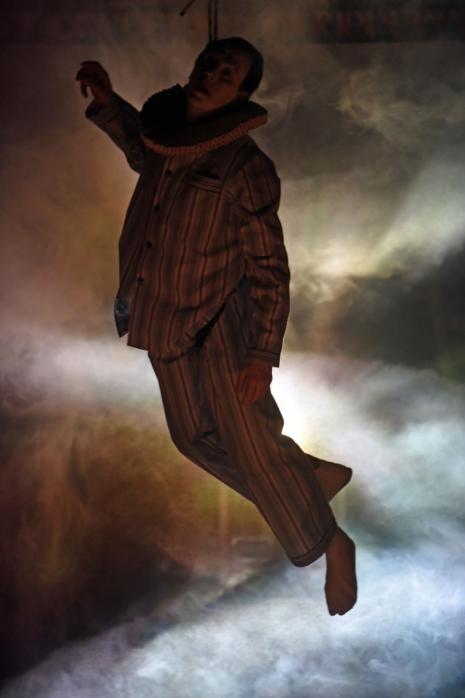
From show to show, Jean Lambert-wild and his associates explore a history of scenography, and in the stage design of Richard III – Loyaulté me lie, they write new chapters. One of these chapters might even be hiding in his clown’s pyjamas.
- Richard III – Loyaulté me lie # 01
- Richard III – Loyaulté me lie # 02
- Richard III – Loyaulté me lie # 03
- Richard III – Loyaulté me lie # 13
- Carnet de bord # 16 Richard III – Loyaulté me lie
- Carnet de bord # 17 Richard III – Loyaulté me lie
- Carnet de bord # 18 Richard III – Loyaulté me lie
- Carnet de bord # 19 Richard III – Loyaulté me lie
- Carnet de bord # 20 Richard III – Loyaulté me lie
- Carnet de bord # 21 Richard III – Loyaulté me lie
- Carnet de bord # 22 Richard III – Loyaulté me lie
- Carnet de bord # 23 Richard III – Loyaulté me lie
- Richard III – Loyaulté me lie # 04
- Richard III – Loyaulté me lie # 05
- Richard III – Loyaulté me lie # 06
- Richard III – Loyaulté me lie # 07
- Richard III – Loyaulté me lie # 08
- Richard III – Loyaulté me lie # 09
- Richard III – Loyaulté me lie # 10
- Richard III – Loyaulté me lie # 11
- Richard III – Loyaulté me lie # 12
- Richard III – Loyaulté me lie # 14
- Richard III – Loyaulté me lie # 15
- Richard III – Loyaulté me lie # 16
- Richard III – Loyaulté me lie # 17
- Richard III – Loyaulté me lie # 18
- Richard III – Loyaulté me lie # 19
- Richard III – Loyaulté me lie # 20
- Richard III – Loyaulté me lie # 21
- Richard III – Loyaulté me lie # 22
- Richard III – Loyaulté me lie # 23
- Richard III – Loyaulté me lie # 24

